Takasaki City, Gunma Prefecture
Late Kofun Period (6th century AD)
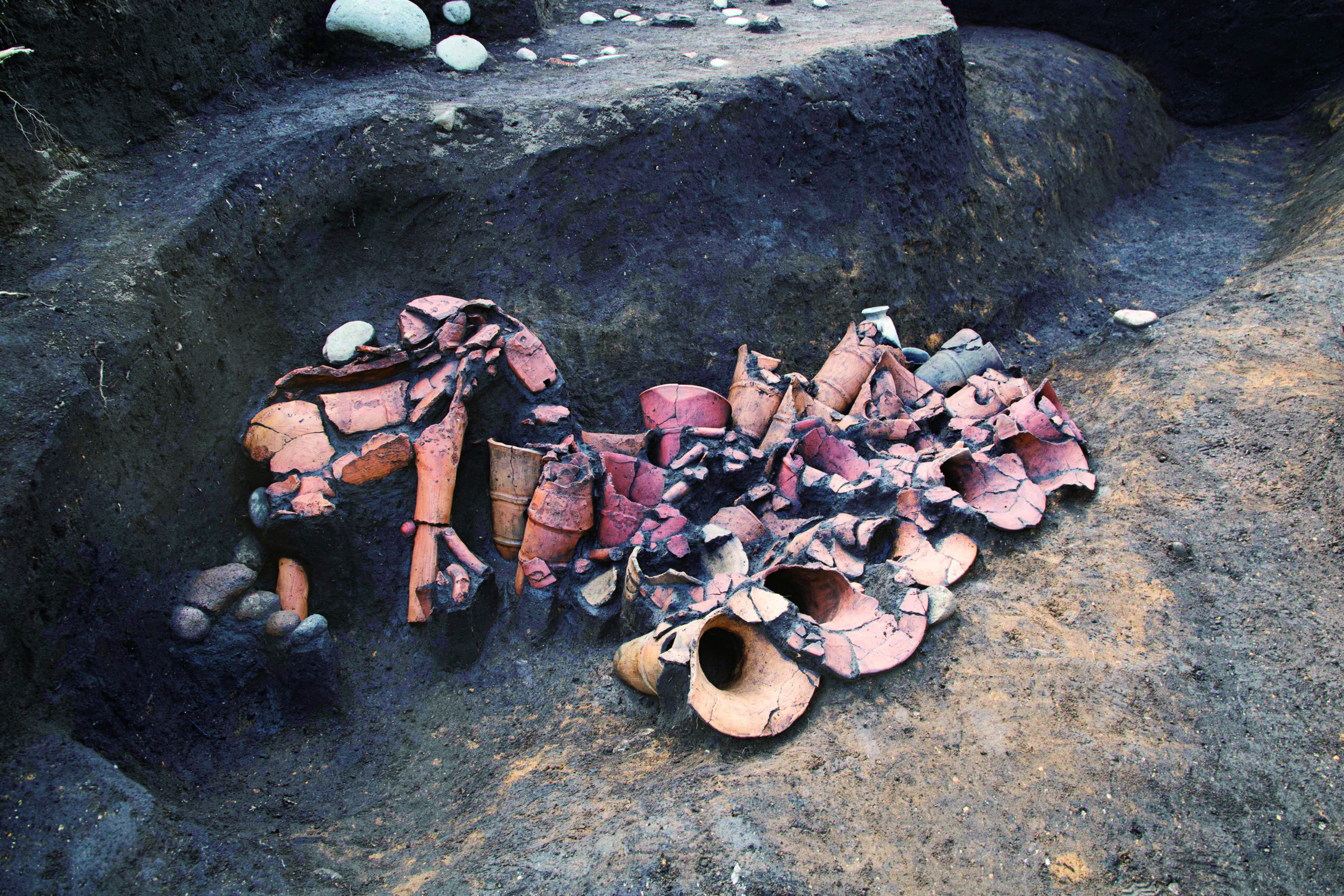
Excavation of haniwa in the ditch of tomb no. 3 (from the east)
Horse-shaped haniwa and morning glory-shaped haniwa are thought to have been stood against the ditch wall.
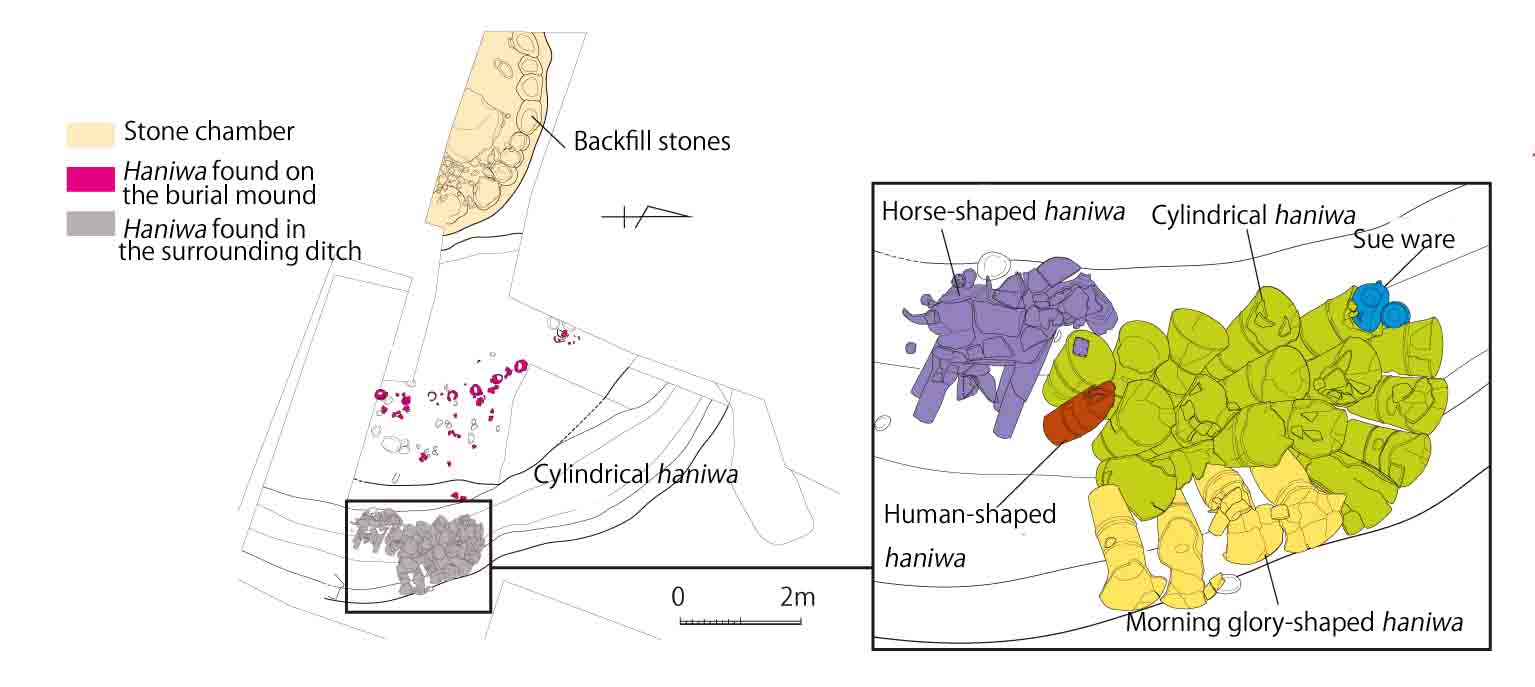
Survey map of tomb no. 3 and enlarged view of the haniwa
It is hypothesized that the haniwa placed in the ditch were placed after approximately 10cm of soil had filled the ditch. Haniwa fragments were scattered on the cylindrical and morning glory shaped haniwa, but the haniwa which stood on the mound itself were not included.
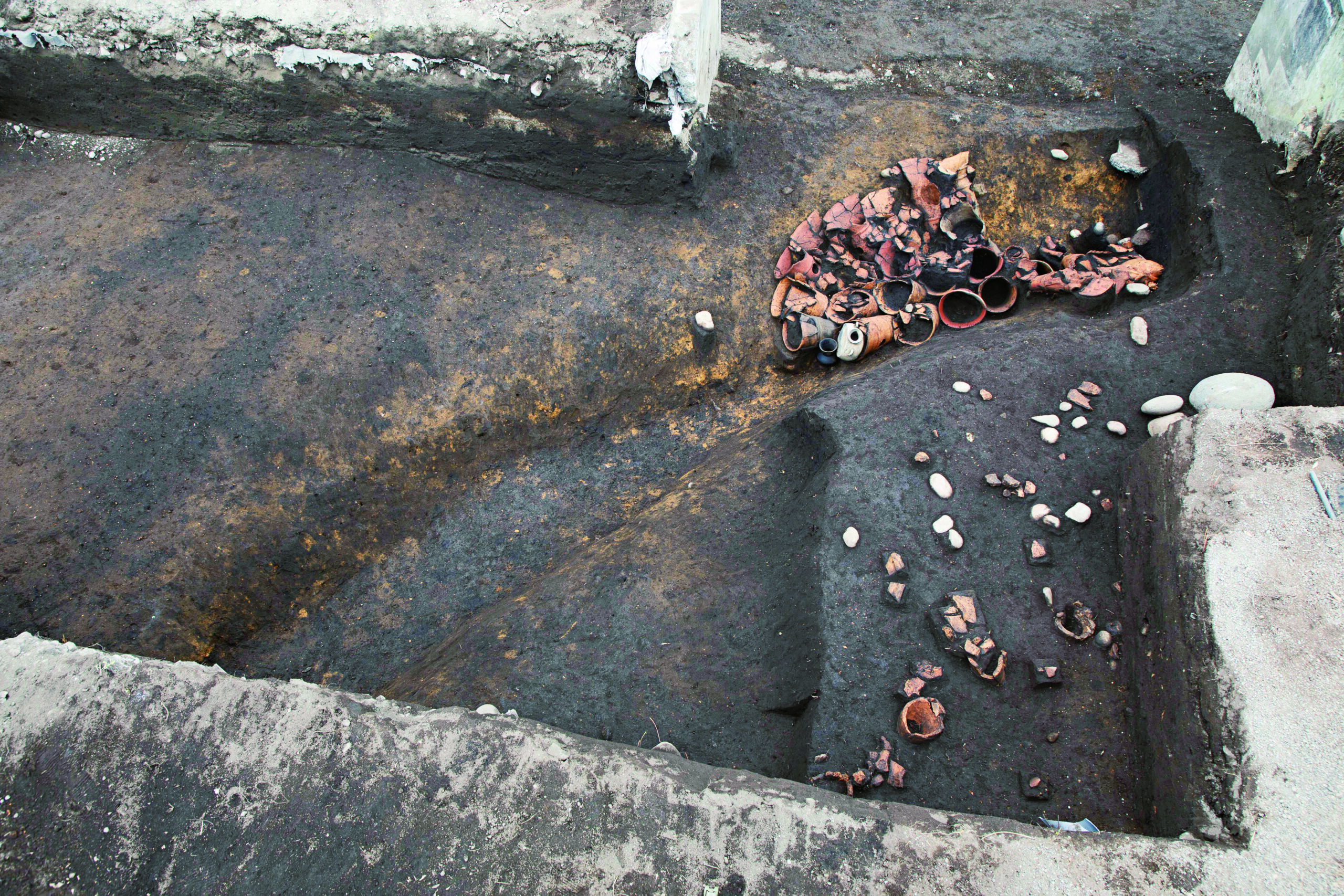
Haniwa excavated from the mound and surrounding ditch (left of the image is north)
The bases of cylindrical haniwa are lined up on the mound (lower right), and a collection of haniwa and Sue ware found in the surrounding ditch (upper right).
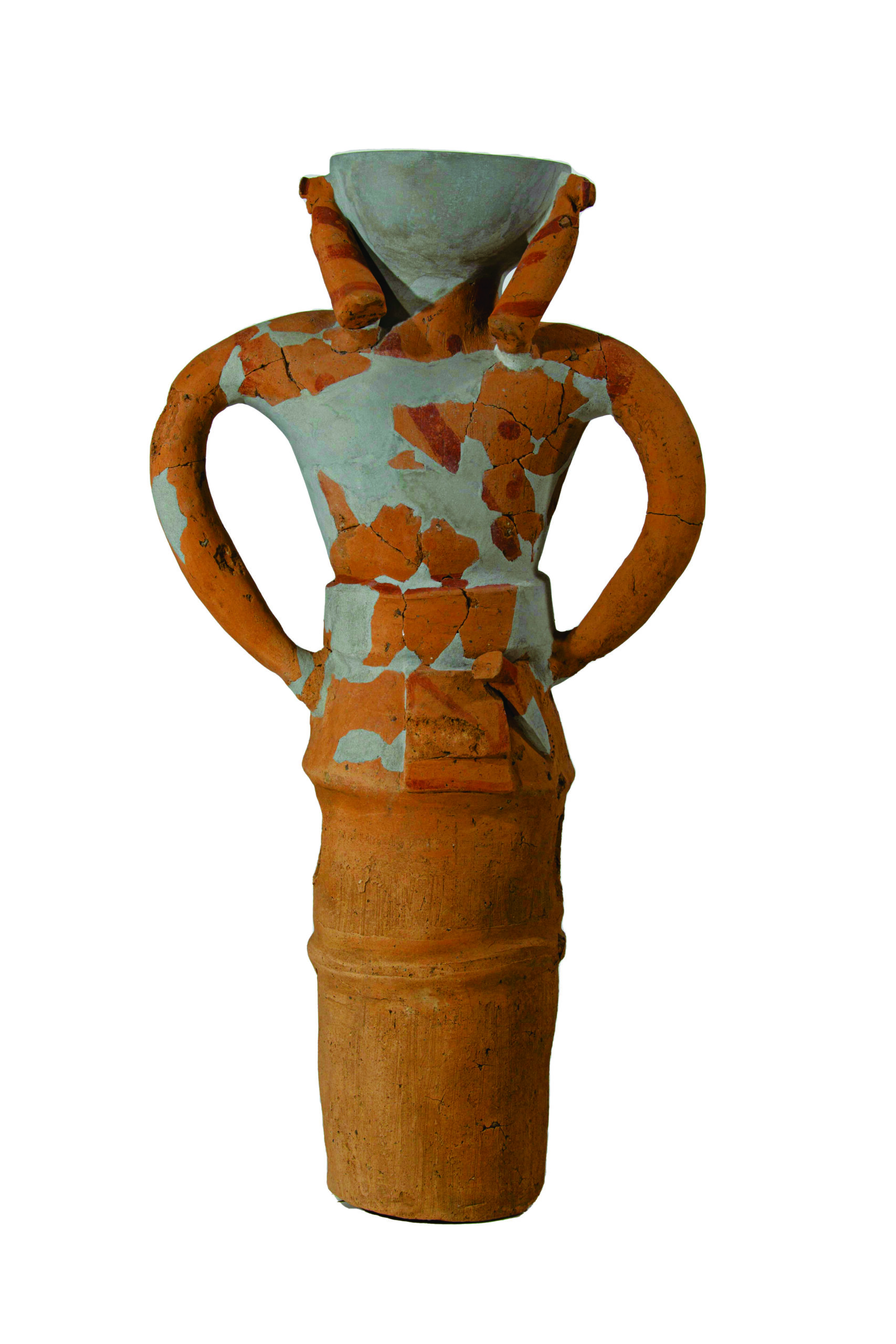
Human-shaped Haniwa
Only the hair of the head remains. As this haniwa was found in proximity to a horse-shaped haniwa, and with a sickle-shaped tool in its waist, it is hypothesized to be a packhorse driver (height: 62.4cm).

Horse-shaped Haniwa
The side of the horse which was leaned against the ditch wall is clearly painted with red pigment and is brightly colored (the side featured in this photo), while the other side has peeling and discoloration. It is possible that the clay was exposed to direct sunlight until it was buried (height: 86cm).
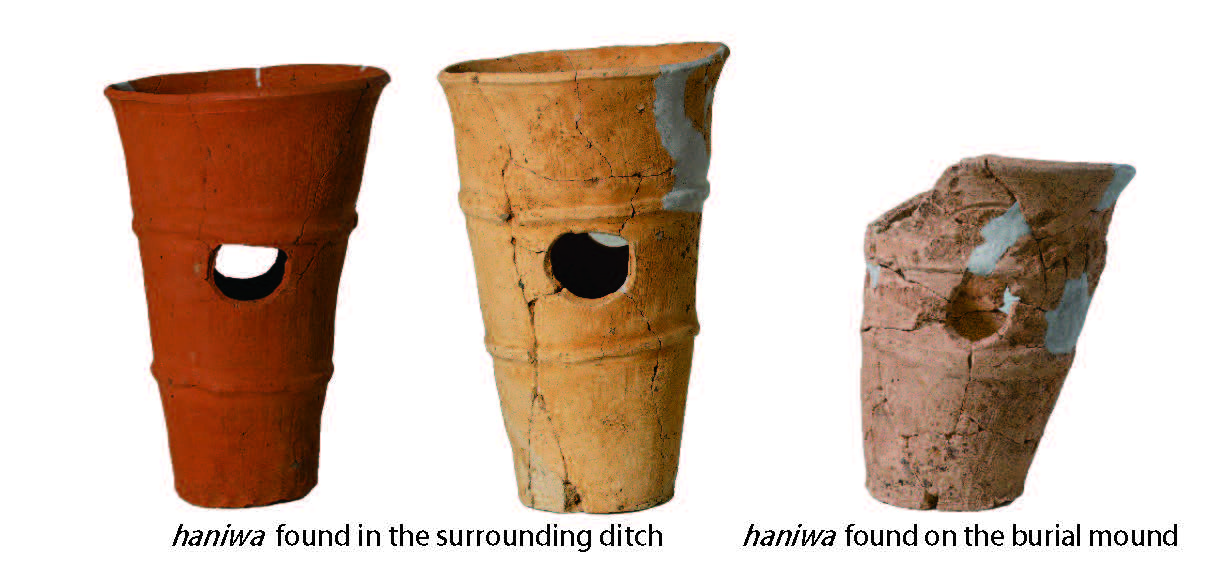
Cylindrical Haniwa
The haniwa on the left is reddish in color, with the center haniwa having a whitish hue, but the characteristics of clay and shaping are the same. The haniwa on the right is clearly different from the other two in height and shape (Left vessel height: 35.9cm, center vessel height: 38.9cm, right vessel height: 29cm).
Haniwa terracotta clay figures amassed in a tumulus ditch:
Indications of tumulus construction preparations
The Shimosatomitenjinmae site is located in Shimosatomi Town, Takasaki City, located in south-central Gunma Prefecture. Shimosatomi is located on the right-hand bank of the Karasu River, which originates from Mt. Hanamagariyama. The upper, middle, and lower river terraces are formed by the Karasu River, with the located on the lower river terrace. Many burial mounds were built in this area during the Kofun period, forming the Satosatomimi tumuli complex. The Shimosatomitenjinmae site introduced here is located at the southeastern end of this tumulus cluster. Excavations at the Shimosatomitenjinmae site were conducted in 2020 in conjunction with the Seimo Inter-regional Trunk Road Improvement Project – revealing pit buildings dating from the mid-Jōmon, Kofun, and Heian periods, as well as rice paddy fields buried under pumice stone following the eruption of Mount Asama in 1108. Three circular tumuli had estimated diameters of 12m, 4.9m, and 15m; with the no. 3 mound being the largest and tallest. Although only a portion of tomb no. 3 was surveyed, a horizontal stone chamber and back-filled stone were uncovered, along with haniwa (terracotta clay figurines), which were excavated from the tumulus and surrounding ditch.
Cylindrical haniwa which stood on the mound of tomb no. 3 remained with their bases buried at intervals of about 30 centimeters. Only one example of a full vessel was found (a relatively short vessel at 29cm tall). However, 23 haniwa and 2 Sue ware were excavated from a surrounding ditch (measuring 1.4m from east to west and 2.2m from north to south). The haniwa consisted of 1 horse-shaped haniwa, 1 human haniwa, 17 cylindrical haniwa, 4 morning glory-shaped haniwa, as well as 1 straight-mouth pot and 1 Sue ware flask. The horse-shaped haniwa and human haniwa were found close to each other, and the cylindrical haniwa and morning glory haniwa were placed separately. The horse-shaped haniwa and the morning glory-shaped haniwa were found standing against the wall of the ditch; the cylindrical haniwa was found toppled over. In addition, two pieces of Sue ware were excavated next to each other, indicating that each type of Sue ware was placed separately. Among the Sue vessels, a Sue flask had a hole punctured in the bottom from an outward force.
In normal circumstances, haniwa are arranged on the mound of a tumulus, and it is very unusual to find them in a surrounding ditch, as in the case of tomb no. 3. It is unlikely that there was a haniwa kiln nearby, and since the height of the cylindrical haniwa is 35 to 40 cm, which is clearly different from the height of the cylindrical haniwa on the mound, it is also unlikely that it was prepared for use in tomb no. 3. Although the true nature of this case is a mystery, it is hypothesized that these haniwa were prepared at the time of the construction of a separate burial mound in the vicinity but were left behind without being used for some reason. At other sites in Gunma Prefecture, haniwa have been excavated from the sides of ditches or in mud pits where there are no burial mounds. This discovery is a valuable clue for understanding the distribution of haniwa and the state of accumulation before the establishment of the mound. (Masahiro Ōnishi)
Adapted from Hakkutsu sareta Nihon rettō 2023 [Excavations in the Japanese Archipelago, 2023] (Bunkachō [Agency for Cultural Affairs], ed., Kyodo News, 2023).

